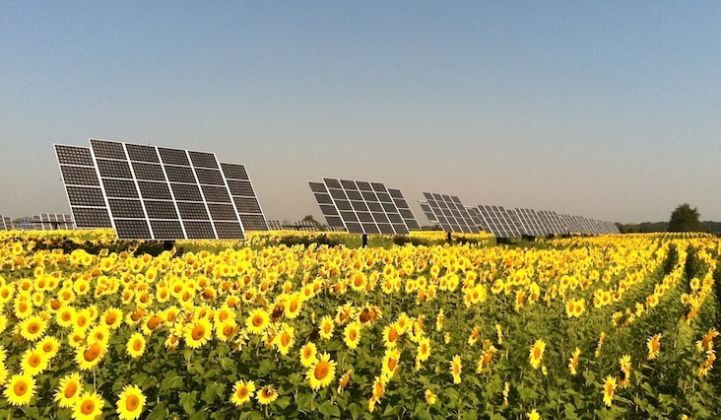California’s Community Shared Solar bill, SB843, achieved another significant milestone on Thursday, passing the appropriations committee in the California Assembly. A final floor vote is expected in the next two weeks.
If passed, SB843 could add an additional 2 gigawatts to California’s renewable energy generation capacity, nearly tripling the size of the solar market and extending the benefits of solar power to new users through shared solar projects.
The breakthrough of SB843 is that it eliminates the need for a consumer to be physically connected to solar panels in order to access solar power. Currently, 75 percent of California’s residents and businesses could not install solar even if they wanted to, since they lack the proper rooftop conditions or are renting their property.
With shared solar, anybody with an electricity bill can participate through a subscription or fractional ownership in a shared solar project. For solar installers both large and small, SB843 means more potential customers and more sales. For property owners, it means more options.
New Options for Property Owners
“This is a game-changer,” said Senator Lois Wolk (D-Davis), the bill’s author. “By giving customers the ability to pool their resources and purchase power generated at larger energy facilities, SB843 will not only expand access to renewable energy to millions of Californians. It will allow these customers to take advantage of the cost savings that come from building one larger facility for a neighborhood or community, without spending any state funds or shifting costs to consumers who choose not to participate. The program established by the bill will also create thousands of jobs, encourage investment, and help our state reach its renewable energy goals.”
For property owners in the state, there will potentially be two options available to go solar: putting panels on your own property under the existing net metering program, or participating in a shared solar project.
Under net metering, the consumer’s kWh consumption is offset by a credit for each kWh generated. Under SB843, the consumer receives their ordinary and customary bill with all the usual usage and tier charges. However, at the bottom of the bill there is a dollar amount credited for the value of their pro-rated share of the generation in the shared solar project. Because the dollar value of the credit is for the generation component and not the transmission and distribution charges, this model avoids cost shifting to non-participating customers.
The economic realities of net metering vs. shared solar suggest that anybody with available rooftop space and financial resources will save more money if they choose to put solar panels on their own roof rather than participate in a shared solar project. Hence, the market demand for on-site residential and commercial solar will continue to thrive.
Meanwhile, SB843 would radically expand the market of potential solar customers to include renters, condo owners and businesses that lease. For example, the next time a solar installer has a property owner that doesn’t qualify for a solar leasing program due to poor credit or perhaps too much shading on their roof, they can instead offer them a subscription in a shared solar project.
New Opportunities for Installers
Large solar EPCs typically contract directly with utilities. Hence, they are not staffed with consumer-facing sales departments and are not geared up to sell individual consumer subscriptions. Small and medium-sized solar installers have strong consumer-facing sales teams, but lack experience with installations larger than a residential or small commercial rooftop.
SB843 is “agnostic” to the underlying business model chosen by the solar installers in that it allows the market to determine which entity structures and financing mechanisms best serve the needs of consumers.
It remains to be seen how the larger solar EPCs and the more modest solar installer/electrical contractor communities will react to and capitalize on these new opportunities. However, it’s possible that the large EPCs will build projects on a speculative basis and then sell wholesale subscription inventory to smaller installers. It’s also possible that smaller installers will move upstream in the value chain and seek out parcels so they can own and operate self-branded shared solar products. Either way, it’s certainly a good time to be in the solar industry, and both groups will likely prosper.
If you support distributed generation, this bill is one to watch. Stay tuned as other states roll out programs of their own.
***
Lee Barken, CPA, LEED-AP is the Energy and Cleantech Practice Leader at Haskell & White, LLP and serves on the board of directors of CleanTECH San Diego and as Vice-Chair of the WREGIS Stakeholder Advisory Committee. You can reach him at [email protected].
Industry Perspective

Guest Post: Shared Solar in California Coming to a Vote
Community solar could mean another two gigawatts in California.

Guest Post: Shared Solar in California Coming to a Vote
Photo Credit: photo courtesy of Convergence Energy, Steve Johnson
-
41Where Will DOE’s Loan Program Make the Next Climate Tech Investments?
-
15What the Frack Is Happening With Natural Gas Prices?
-
9With an Energy Crisis Brewing, No Peak in Sight for Emissions


